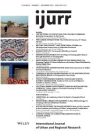Determining the ‘tensions, conflicts and social changes’ in the city through symbolic configurations and shifting images has been a recent dimension in the study of urban culture. This is the perspective taken in this article. A brief introduction of Turkey and Atatürk is followed by a study of urban symbols. Starting with those of the Ottoman period, these include monuments and statues; the names of city squares, parks and shops; and the street names and official city emblems since the settlement became the capital in 1923. The city itself was the symbol of national independence and the new republic in the 1920s and 1930s. Fluctuations over the years, in the preference for certain names or artefacts, reflect the shifts from nation‐building to clashes of political ideologies and, more recently, an ‘identity crisis’ that the nation has overtly been experiencing. The study is based on observations that are supported by publications from libraries and private collections, including memoirs. Further material has been provided by informal talks with people from all backgrounds, including the recollections of the author Erdentug, who has lived in the city since 1956, and the reminiscences of her parents commencing twenty years before this date.
Details
Written by:
Aygen Erdentuǧ, Berrak Burçak
Digital Object Identifier (DOI)
10.1111/1468-2427.00163
About DOI
Read full article as PDF
Read full article as HTML
See the references for this article
